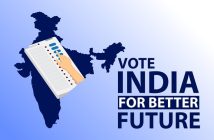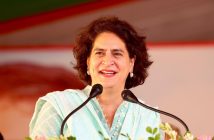Devoid of political feelers, Nirmala Sitharaman’s 90-minute speech showcased a Budget strategy-driven more by economic assumptions than any overt political imperatives, except when it came to reforms.
Elections to five states which account for a fifth of the nation’s population are barely 10 days away but they seemed quite a distance from Finance Minister Nirmala Sitharaman’s Budget speech.
No desk-thumping references to the usual housing, electricity, cooking gas, toilets numbers; no mention of names of places when projects were listed, be it logistics or ropeways.
Devoid of political feelers, the 90-minute speech showcased a Budget strategy-driven more by economic assumptions than any overt political imperatives, except when it came to reforms.
Still smarting from the repeal of farm laws, the government’s big showpiece of farm reform during the pandemic in the face of protests, Sitharaman did not refer to the big-ticket announcements on privatization, asset monetization and disinvestment in the previous Budget. Instead, she chose to focus exclusively on high spending to bolster economic recovery.
This is not the first time she did so.
In the Budget for 2021-22, too, she had liberated herself from fiscal restraints to push through a massive expenditure plan to aid a recovery still trying to strike roots then.
In an economy where consumption demand accounts for almost 55 per cent of output, what could be the government’s assumptions to bank on an investment-led strategy to deliver optimum growth?
For one, Sitharaman has estimated only a modest growth rate of 8-8.5 per cent for the next year. It is lower than even the IMF projection of 9 per cent for 2022-23, and also lower than the 9.2 per cent growth estimate by the NSO for the current financial year.
Such a growth rate, officials said, is realistic also because there is a belief
— guarded thought it may be — that the worst of the Covid-19 pandemic is over and the third wave could taper off by the end of March.
This also reflects in the lower Rs 73,000-crore MNREGA allocation for 2022-23 compared to the Rs 98,000 crore in the revised estimate for 2021-22 and a sharp cut in vaccine allocation.
The job guarantee scheme is a demand-led programme; a lower outlay suggests the pandemic-induced distress is gradually waning.
The NDA government, under Prime Minister Narendra Modi, also reckons that wide-ranging sops to compensate for income loss is fraught with problems of identification of beneficiaries, quantum of support, and leakage in distribution or corruption.
Moreover, it would have probably worked during the first wave of the pandemic when workers migrated in large numbers to their home states.
“We didn’t do it then for the reasons stated; now it makes little sense,” said a top government official who did not wish to be named.
Further, the political leadership firmly believes that broad-based growth will come from a massive expenditure push in productive sectors, and the resultant trickle-down.
NK Singh, Chairman of Fifteenth Finance Commission, said, there is no point in segmenting the middle-class population.
“Incomes will flow across all segments when jobs are created due to higher spending,”
“The biggest political signal in the Budget is that it has stayed away from the distraction of elections and avoided the populist trap of tax concessions and an across-the-board income support.”
The Centre also recognizes its own limitations on efficient spending. Hence, it has roped in the states to deliver – it has hiked the borrowing limit of states to 4 per cent of GSDP and also provided for 50-year interest-free loans up to Rs 1 lakh crore in 2022-23.
It realizes that states are better placed to spend, which in turn, will touch more lives.
Higher spending on infrastructure will lift capacities of primary products such as steel and cement; and as this picks up, the assumption is that the private sector will get back to the drawing board to plan for additional capacities – kick-starting private sector crowding-in that Sitharaman said in her speech.
While that seems to be the broad strategy, what the government may have to grapple with in the meantime is higher inflation and a gradual hardening of monetary policy.
This, together, with a reliance on more market borrowings with firming up of interest rates may actually end up risking crowding out – a phenomenon where the private sector finds it difficult to borrow from banks, with the government itself becoming a competitor.




